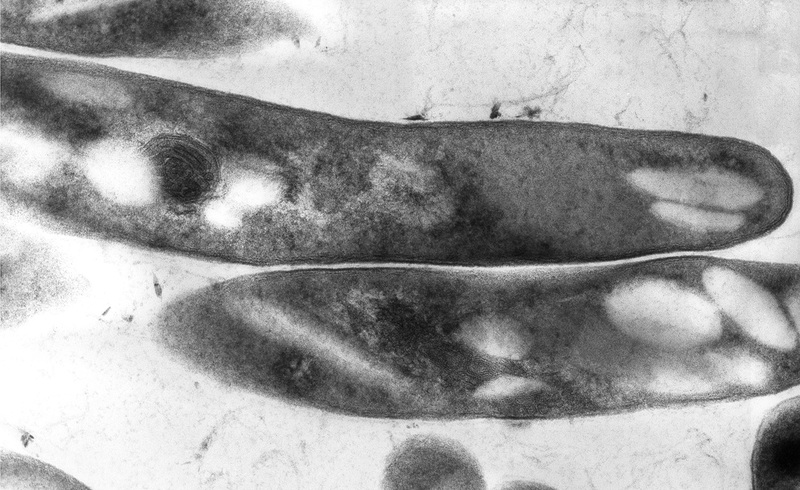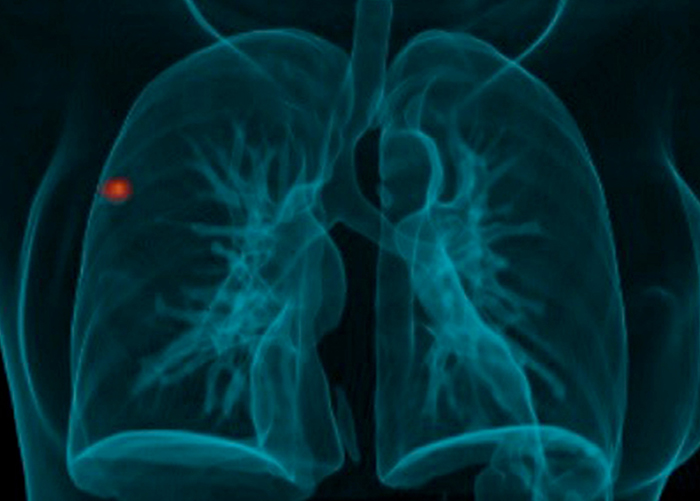Newly-discovered TB blood signal provides early warning for at-risk patients
18 January 2018 | Story Supplied Read time 5 min.
Tuberculosis can be detected in people infected with HIV via a unique blood signal before symptoms appear, according to a new study.
The study, which is the result of a long-standing collaboration between UCT’s Institute of Infectious Disease and Molecular Medicine (IDM), the Francis Crick Institute, Imperial College London, and the National Institutes of Health provides new insights into how the body responds during the early stages of the disease.
The findings could enable researchers to develop tests to predict and prevent the worsening of symptoms in the most vulnerable patients.
Early indicators
Tuberculosis (TB) is typically classified as being either latent or active. Latent TB occurs when a person has been infected with the bacteria, but their immune system manages to control any further spread. They may develop active TB at a later stage, at which point the disease’s symptoms will become apparent.
However, the study, published this week in Proceedings of the National Academy of Sciences, offers new evidence of a more nuanced transition from latent to active TB.
This is particularly significant for HIV-infected patients, who are 26 to 31 times more likely to develop active TB.

In a previous investigation in Cape Town, the research team used high-resolution scans to reveal TB-related lung damage in 10 out of a group of 35 HIV-1-infected patients, who were otherwise asymptomatic. These patients were also found to be significantly more likely to develop active TB at a later stage.
In this study, the team built on these findings by using an approach known as transcriptomics to investigate which parts of active TB could be found in the blood of patients who were, ostensibly, symptomless.
New clues
"This [study's findings give] hope that a test to predict those at greatest risk of progression of tuberculosis can indeed be derived."
One way in which the body reacts to changes and threats is to switch genes on and off, in order to allow them to adapt. In patients affected by TB, this happens with several different sets of genes.
Transcriptomics refers to an approach whereby researchers use gene transcripts – which act as records of which genes are being switched, or “read” – to put together a picture of what the body does to fight off a particular disease.
In this study, researchers were able to take snapshots of which genes were being read in unwell people with active TB, subclinical TB (only detectable through high-resolution scans) and latent TB.
By comparing them, the team found that certain genes were switched on during the earliest subclinical stages of the disease. Significantly, this TB “signal” was detectable in the blood of a separate group of HIV-uninfected people up to a year before they developed symptoms of the disease.
Testing for TB
The paper’s first author, Dr Hanif Esmail, now based at the University of Oxford, worked on the project while undertaking a PhD at Imperial College, based entirely at UCT and in collaboration with the Francis Crick Institute.
Commenting on the implications of the study's findings, Esmail said: “We now know that TB can be detectable in the early stages of disease by transcript signals in blood, even in those with HIV co-infection.
“This gives hope that a test to identify people in the earliest stages of disease (before they develop symptoms or are picked up by current available tests) might be possible.”
Discussing the limitations of the research, Esmail said: “This was a small study of only 50 patients (10 of which had subclinical TB, 25 latent TB and 15 active TB). Larger studies will be needed for validation of findings.
“We have almost completed recruitment of a much larger study along similar lines, which we hope will confirm and take forward these findings.”
Professor Robert J Wilkinson from the IDM, last author on the paper, commented: “This work reflects a significant increase in understanding that has arisen from long-standing collaboration with colleagues at the National Institutes of Health, Francis Crick Institute and the University of Cape Town.
“On hearing of our findings, our colleagues at UCT were able to re-examine their own data and confirmed our finding in a different population. This increases hope that a test to predict those at greatest risk of progression of tuberculosis can indeed be derived.”
This article is a derivative of “Newly-discovered TB blood signal provides early warning for at-risk patients” by Imperial College London, used under CC BY-NC-SA 4.0.
 This work is licensed under a Creative Commons Attribution-NoDerivatives 4.0 International License.
This work is licensed under a Creative Commons Attribution-NoDerivatives 4.0 International License.
Please view the republishing articles page for more information.










